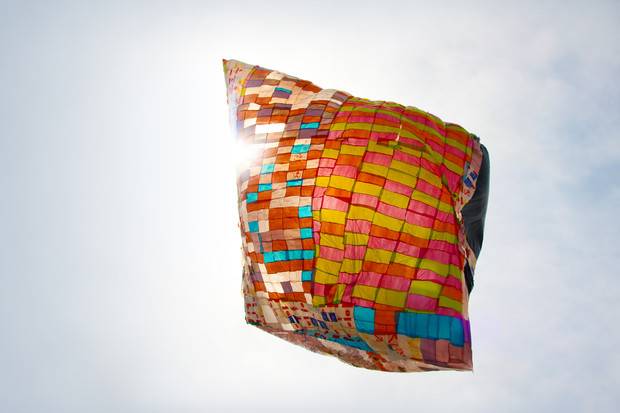No Man's Sky: The Infinite Fame of Galactic Exploration
Generated through complex mathematical equations, a game simulates a universe with all the same physical, atmospheric, infinite laws.
A just-released computer game about the universe has heightened expectations and desire in thousands of people for the past two years. Apparently, it’s everything that was promised. No Man’s Sky is a massive, even dizzying experience of infinite possibilities. One boards a spaceship and flies to a very carefully generated other planet. Created by programmer Sean Murray, the game is based in a mathematical foundation that simulates the complex behavior of what we know of the cosmos.
Mathematical equations define geography, water, textures, climate, the ages of the stars, the force of gravity, the arcs of orbits, and the density of atmospheres. Planets are separated from each other by light years in digital space. A small fraction of these planets are home to complex life. Players can choose to stay on one planet, with plenty of time to discover all that’s on it, or go somewhere else to accumulate the resources necessary to surviving on the ship.

No Man’s Sky is a tribute to the science fiction that Murray loved in his youth – Asimov, Clarke, Heinlein – and not even Murray has explored everything in it. Because it’s made up of equations and algorithms, the possibilities are virtually endless. The main mission is to reach the center of the universe (there is an option for displaying a galactic map so as to know where you’re going), but every player will have a unique experience in documenting a story of galactic exploration.

Related Articles
When ancient rituals became religion
The emergence of religions irreversibly changed the history of humanity. It’s therefore essential to ask when and how did ancient peoples’ rituals become organized systems of thought, each with their
Seven ancient maps of the Americas
A map is not the territory. —Alfred Korzybski Maps are never merely maps. They’re human projections, metaphors in which we find both the geographical and the imaginary. The cases of ghost islands
An artist crochets a perfect skeleton and internal organs
Shanell Papp is a skilled textile and crochet artist. She spent four long months crocheting a life-size skeleton in wool. She then filled it in with the organs of the human body in an act as patient
A musical tribute to maps
A sequence of sounds, rhythms, melodies and silences: music is a most primitive art, the most essential, and the most powerful of all languages. Its capacity is not limited to the (hardly trivial)
The enchantment of 17th-century optics
The sense of sight is perhaps one the imagination’s most prolific masters. That is why humankind has been fascinated and bewitched by optics and their possibilities for centuries. Like the heart, the
Would you found your own micro-nation? These eccentric examples show how easy it can be
Founding a country is, in some ways, a simple task. It is enough to manifest its existence and the motives for creating a new political entity. At least that is what has been demonstrated by the
Wondrous crossings: the galaxy caves of New Zealand
Often, the most extraordinary phenomena are “jealous of themselves” ––and they happen where the human eye cannot enjoy them. However, they can be discovered, and when we do find them we experience a
Think you have strange reading habits? Wait until you've seen how Mcluhan reads
We often forget or neglect to think about the infinite circumstances that are condensed in the acts that we consider habitual. Using a fork to eat, for example, or walking down the street and being
The sky is calling us, a love letter to the cosmos (video)
We once dreamt of open sails and Open seas We once dreamt of new frontiers and New lands Are we still a brave people? We must not forget that the very stars we see nowadays are the same stars and
The sister you always wanted (but made into a crystal chandelier)
Lucas Maassen always wanted to have a sister. And after 36 years he finally procured one, except, as strange as it may sound, in the shape of a chandelier. Maassen, a Dutch designer, asked the










